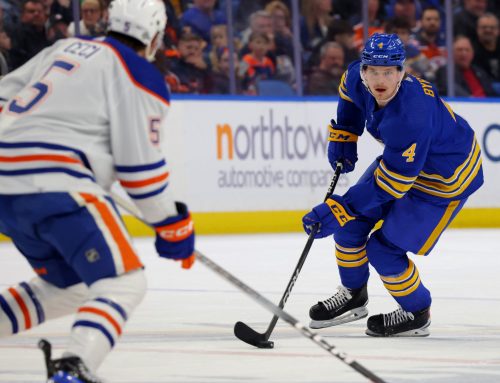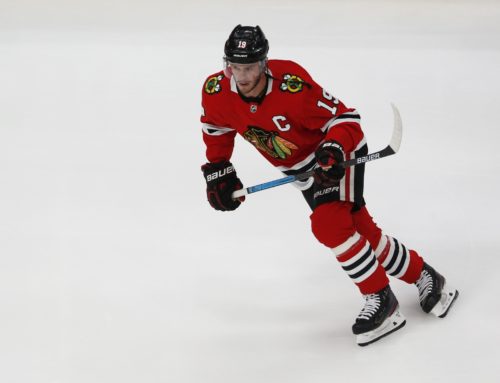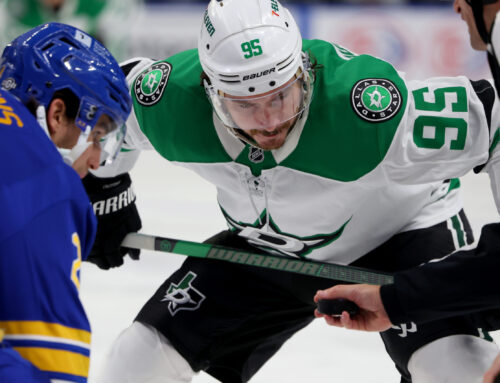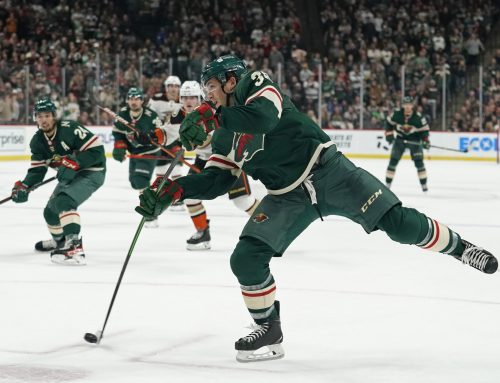In today's Ramblings, I'll share five tips to consider in your upcoming fantasy drafts. Let's get right into it!
1) Maximizing Games Played – Light Nights
'Light nights' refer to days when there aren't many games scheduled. For our purposes, we'll use a threshold of eight games – meaning 16 or fewer NHL teams in action. If you'd like to use a lower threshold, you can input a different number into Dobber's Schedule Planner. By incorporating players with light nights into your roster, you can lower the chances of every skater at a given position playing on the same day, which would otherwise force you to bench active players. Here's a breakdown with each team's total number of light nights this season.

In most fantasy leagues, you have a set number of roster slots and bench spots. In the early rounds, when you're drafting those top players that will be on your starting roster every night, I wouldn't focus too much on the light-night effect. Just pick the best players available. However, as the draft goes on and you begin selecting your bench players, considering light nights becomes more important. Let's say at the end of your draft you have two center slots but three centers, Robert Thomas (St. Louis), Macklin Celebrini (San Jose), and Elias Lindholm (Boston). Three players on teams with minimal light nights, which means they're mostly playing on busy days.
At this point, I'd like to introduce you to one of the most underrated tools for your fantasy draft: Dobber's Roster GP Maximizer. The rest of this paragraph explains how to use it, so feel free to skip to the next one if you're not interested in the process right now. First, enter the date range you're interested in. For the purposes of draft planning, I usually select 'custom date range' and set it from the beginning of October to the end of April to capture the full campaign. After you click the big green 'generate report' button, you can scroll down to the 'compare player schedules' section. Here, you can set the number of players at your position of interest. In our example above, we have three centers. Next, we input each player's team and set the 'max active players per day' to two because we only have two starting center slots. Finally, we hit that beautiful green 'compare schedules' button.
From this magical resource, we learn that a Thomas/Celebrini/Lindholm combo requires us to bench an active player 45 times during the season. In contrast, if we swap Celebrini for someone like Trevor Zegras – who plays for a Ducks' team with the most 'light nights' on tap – then there are only 29 of these scheduling conflicts. If you pick a center from Chicago, it'd be 35. From Vancouver or the Rangers? 33. Obviously there's more to schedule overlap than just light nights, as two teams might play on different busy nights throughout the year. However, the light-night effect is a good general guiding principle, and the GP Maximizer tool can help you tackle more specific situations.
2) Fantasy Playoff Schedules
Depending on your league's format, you might want to consider a player's fantasy playoff schedule when building your roster. If you're in a league where most teams make the playoffs, and there's a bigger prize for postseason success than regular season success, you'll want to prioritize those final weeks of the campaign. It doesn't make sense to have your top draft picks playing fewer games during the most important stretch of your title chase.
You can use Dobber's Schedule Planner to input the date range of your league's playoffs. I'm personally using March 17 – April 6, since my leagues don't include the final week of the NHL regular season (because star players often sit out to avoid injury before the real-world playoffs).
During this window, there are a bunch of teams that play 11 games, but others like the Rangers and Sharks only play eight. Three extra games over three weeks may seem insignificant, but one extra game per matchup could be the difference between winning and losing. There are also other things to consider beyond just total games played. For example, as we discussed above, players with more light nights might be easier to incorporate into your lineup. During my fantasy playoff window, Chicago and Minnesota each have seven light-night contests, while St. Louis, San Jose, and Edmonton each have one. You can also look at a team's opponents during your playoff weeks to see if a skater is up against teams that struggled defensively last year, or if a goalie will be facing offenses that previously proved potent.
3) Avoiding High-Profile Free-Agent Signings
If you've had the displeasure of reading my articles this summer, you would've been treated to incessant banging of the same drum – "avoid high-profile players in their first year with a new team". The way I see it, there are too many unknowns when a player joins a new squad. We don't know if they'll complement their new linemates – and even if they do, there might be an adjustment period during which production is dampened. The public tends to focus on best-case scenario when a good player joins a new team, leading to inflated fantasy values. The allure of a potential jackpot clouds our vision of more realistic outcomes. Jake Guentzel – elite player joining an elite offense in Tampa Bay – career-high production guaranteed! But was Guentzel not already playing with an elite Sidney Crosby in Pittsburgh? It's possible that he fits in with the Lightning right away, but isn't it also possible that it takes some time for him to settle in, and for the team to learn how to best incorporate his skillset?
There's an optimism tax on high-profile players joining new teams. That added cost gives you less room to get a strong return on investment at the draft table. The way I see it, players in familiar circumstances are more predictable and leave less room for disappointment. Of course, this isn't as applicable to lower-profile free agents because they come with smaller costs, leaving more space to surpass expectations and provide positive value.
4) Avoiding High-Profile Goalies
I avoid using high draft picks on goalies because their performances are harder to project than skaters. Just look at last season when managers that spent big on Ilya Sorokin, Juuse Saros, and Jake Oettinger were left disappointed as all three fell short of expectations. Although skater performance can also fluctuate, there are fewer variables to account for when predicting a skater's output.
Star skaters can create their own offense and produce at a respectable rate even if their linemates are struggling, or they might be carried by linemates during their own periods of struggle. It's a little more complex for goalies because they're affected by more variables. Star skaters are relatively insulated in the sense that they spend most of their minutes alongside a small combination of players – most of which tend to be quite talented as well. In contrast, a goalie has to play behind every member of the team, meaning more players – including some that might be defensively incompetent – that have an influence on a netminder's individual statistics. So even if a goalie is playing incredibly well individually, it's not necessarily going to translate to the best fantasy numbers. With all this in mind, I'd rather use my high draft picks on skaters since I'm more likely to get a strong return on investment. This is a viable strategy for me because my leagues feature more skater categories than goaltending categories, so it makes sense to invest more in skaters than netminders. However, your league format may warrant a different strategy.
This year, I'm personally targeting Joey Daccord, Filip Gustavsson, and Logan Thompson/Charlie Lindgren. All rank outside Yahoo's top-150 as I write this, but I like them because they've shown promising individual ability in small samples and they're playing behind teams that should fare well defensively.
5) Contract Years Affect Different Players in Different Ways
Being in the final year of your contract does not automatically turn you into prime Gretzky. Last season, Steven Stamkos and Tyler Toffoli were good, but didn't really elevate past their regular rates. Then there was Elias Lindholm and Jake DeBrusk, who fell significantly short of previous accomplishments. For every 40-goal Jonathan Marchessault and 57-goal Sam Reinhart, there will also be a few high-profile players approaching free agency who don't rise to the occasion. Still, being aware of which players are playing for a new contract can be useful, so here are a few thoughts on this year's upcoming free agents:
For many years, Mitch Marner has been the notorious scapegoat in Toronto. Despite posting a hundred-point pace in each of the last four seasons, he's often criticized because of his lofty salary. As a result of his age and strong offensive numbers, teams will be eager to offer him a great deal of money and term regardless of how he plays this season. That safety net might prevent Marner form experiencing the same contract-year motivation that others do. I still like him to perform around the level he has in recent years, but I wouldn't expect much more.
When your name is Sidney Crosby, you don't need a big year to earn another deal. One of the game's greatest players is set to flirt with a 90-point pace once again – just as he's done in recent years. He'll do it because he's an elite player that holds himself to a high standard, not because he needs to secure a new contract.
Would it be crazy to call Nikolaj Ehlers this year's Sam Reinhart? Probably. Is that going to stop me from doing it? Probably not. While I'm not expecting 57 goals from the Great Dane, he perfectly fits the archetype of player who 's motivated to thrive in a contract year. Despite strong production in recent years, he's been limited to less than 16 minutes a night and stuck in a secondary power-play role. His cap hit ranks ~150th in the league, but his 0.84 points per game over the past five years ranks in the top-60. Looking at points per 60 minutes, he sits 10th. With such a discrepancy between production and compensation, he has every reason to elevate his game and secure a better future for himself. He needs to perform not only for a lucrative contract, but also to prove that he's deserving of a larger role. With a new head coach in town, there's potential for Ehlers to finally see more opportunity after years of underutilization.
Brock Boeser is another player who should be motivated to elevate his game to secure a new contract. However, he'll be swimming against the current of regression. Last year's career-high 40 goals and 74 points were achieved through lofty shooting percentages that will be hard to match this year. So, while there's certainly incentive for him to be his best, I wouldn't bet on him surpassing last year's totals.
~
Thanks for reading! If you ever have any fantasy hockey questions, follow me on Twitter @BrennanDeSouza and shoot me a message!





 SEA
SEA CHI
CHI FLA
FLA DAL
DAL WPG
WPG CBJ
CBJ L.A
L.A VAN
VAN ANA
ANA NSH
NSH WSH
WSH
